I've been feeding my sourdough starter for almost four years. Typically feeding it once per day which means there have been 1460 feedings.
I've tried a couple different containers for storing my sourdough starter but the short answer is The Best Jar for Storing Sourdough Starter is a basic wide-mouth quart-sized mason jar with one of these reusable canning lids.
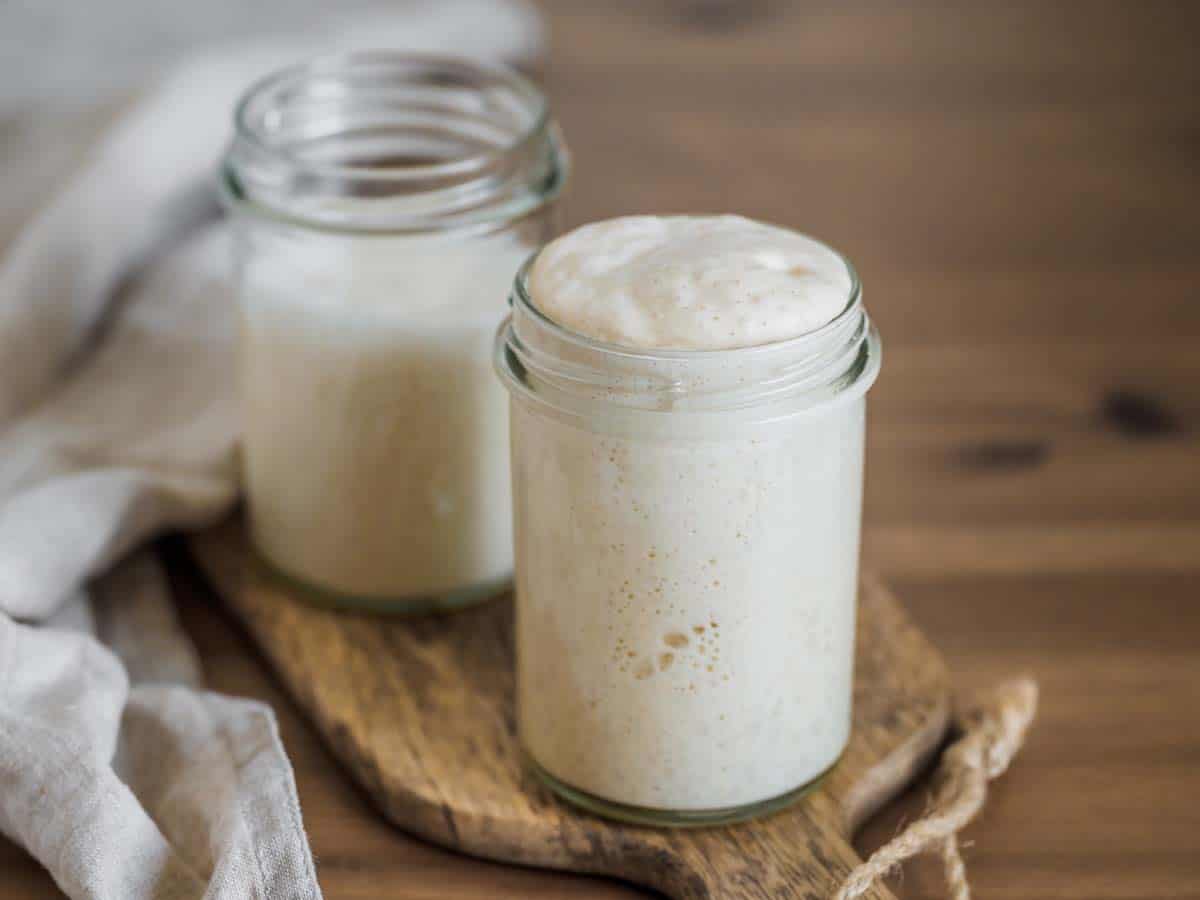
Why Canning Jars are Perfect for Storing Sourdough Starter
- They are widely available. You can purchase canning jars at Target, Walmart, and most grocery and hardware stores.
- They are the perfect size, transparent, made of glass, have a wide mouth, and are cheap.
- They are usually sold in a multipack. I prefer to have several jars available so that I can move my sourdough starter to a new freshly sanitized container every time I feed it.
If you are just getting started on your sourdough journey you will want to check out my roundup of the best sourdough discard recipes.
I also have a sourdough gift guide that lists some of my favorite sourdough products.
Jump to:
- Why Canning Jars are Perfect for Storing Sourdough Starter
- Save This Recipe to Your Email
- Choosing the Right Container for Your Sourdough Starter
- Why Transparent Jars Are Better
- Why Straight Sides Are Better
- Why Wide-Mouth Containers Are Better
- What Size Container is Best?
- What Type of Lid is Best?
- Why Are Glass Containers Better Than Plastic Containers?
- Sourdough Storage FAQ
- Sourdough Discard Recipes
- 💬 Comments
Choosing the Right Container for Your Sourdough Starter
The best containers for sourdough have a few traits in common.
- Sourdough starter containers should be transparent.
- They should have straight sides.
- Choose a storage container with a wide mouth.
- You should also pay attention to the size of the container.
- The best containers should also have well-fitting lids.
- Glass storage containers are better than plastic.
Once you have chosen your container, check out this post to learn how long can you store sourdough discard.
You may also be wondering what is the difference between sourdough starter and sourdough discard?
Why Transparent Jars Are Better
The best jars are transparent allowing you to easily monitor the growth of your sourdough starter on a regular basis. Monitoring the size of your starter, its consistency, and the number of bubbles will let you know when your starter is ready to be used.
A clear container will also allow you to see if there is any hooch forming. Hooch is an alcohol by-product of the fermentation process and is an indicator that your starter is hungry and it is time to feed it again. Hooch can appear in a range of colors from clear to gray. - The Pantry Mama
You can also see if any mold is developing. Unfortunately, if you see mold developing you will need to throw out your sourdough starter or discard.
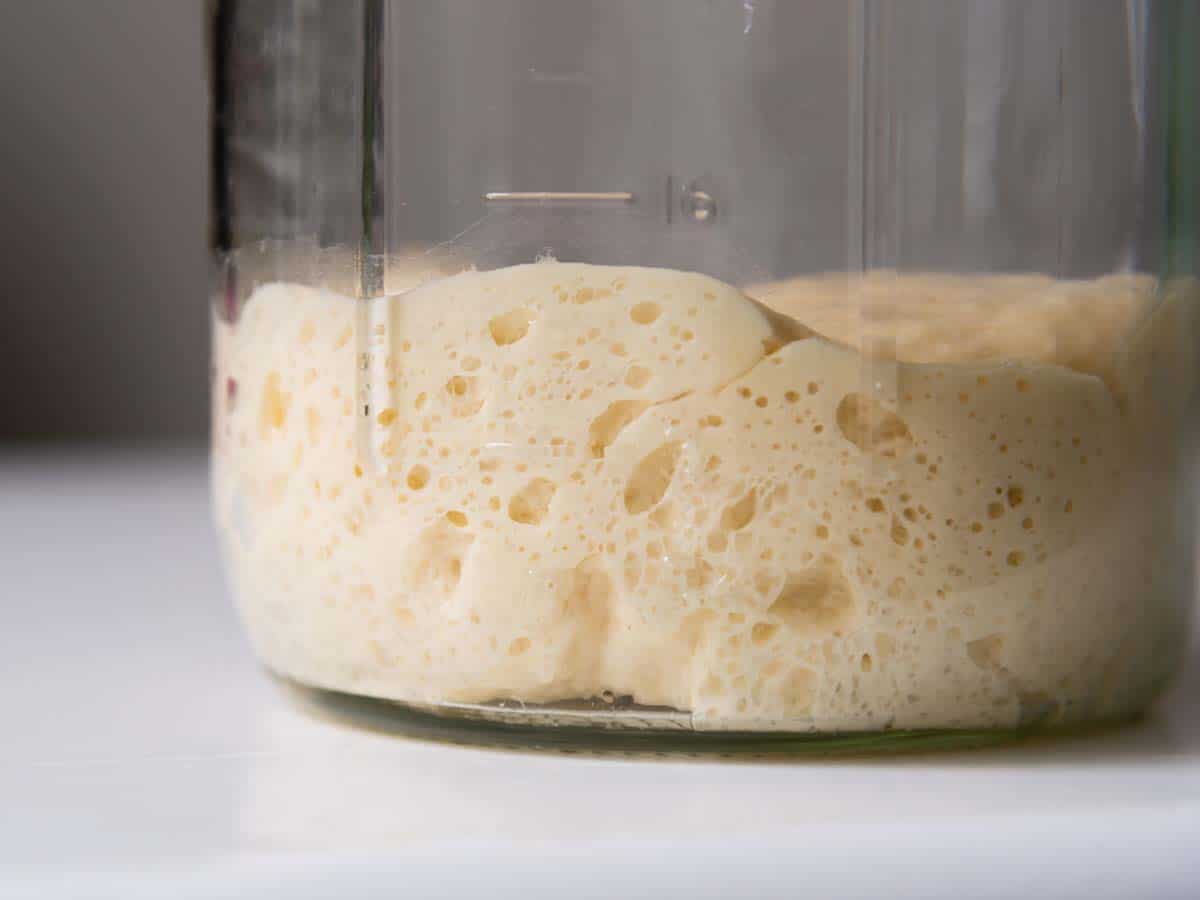
Why Straight Sides Are Better
Straight sides make it easy to track how much your starter has risen. Straight sided jars are also easier to clean.
Bonus points should be given to containers that already have measurement marks on the side. Most canning jars do.
Tip: If your container doesn't have measurement marks on the side you can use a rubber band placed around the container to track how much your starter has risen.
Why Wide-Mouth Containers Are Better
A wide mouth jar is easier to work with. They make it easy to add and remove sourdough starter or discard. Wide-mouth jars are also easier to clean.
If you're looking for something a little more stylish for your kitchen counter, I recommend this 1.5 liter Weck Tulip jars. They have wide mouths and a shape that is easy to clean.
What Size Container is Best?
Smaller jars will limit the amount of starter you are able to create. While a too-large container will be difficult to store and make it harder to maintain the sourdough starter's temperature.
I suggest choosing a container in the 26-34 oz range. My favorite sized container is one quart in volume which is about 32 ounces.
This size is plenty big to produce 100-200 grams of starter which is a typical amount needed for most recipes.
If you temporarily need a larger container, to produce multiple loaves of sourdough bread at one time I suggest using a Cambro 1 Quart Storage Container. This large container is sturdy which makes them a favorite in professional kitchens. Each container has large easy-to-read markings and a wide-open mouth. These plastic containers are also BPA-free.
The lids do seal tightly so make sure to tilt the lid slightly to allow excess gas to escape.
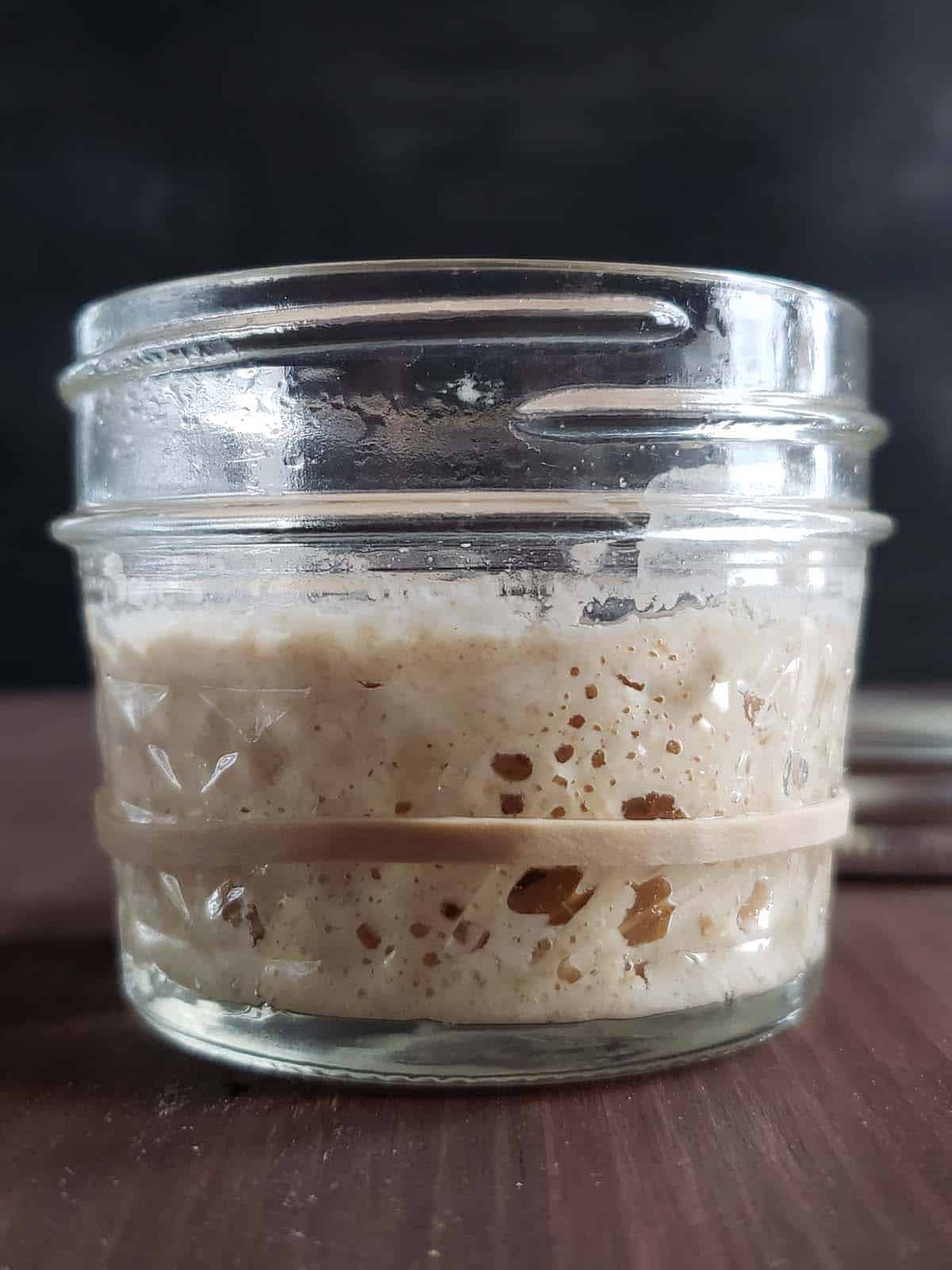
I recently switched to maintaining a smaller sourdough starter and now use these smaller 4oz canning jars. Only switching to a larger jar when I need more starter to bake a loaf of bread.
What Type of Lid is Best?
A lid helps prevent the top of your sourdough starter from drying out. You will also want to cover your sourdough container to help prevent mold from forming and bugs like fruit flies from landing in your sourdough starter.
A lid is also useful for preventing spills if you happen to knock your sourdough starter or discard over.
When feeding sourdough starter you want a tight fitting lid that can be loosened. As sourdough starter expands the yeast produces gas which if it has nowhere to escape will cause pressure to build up in the container and potentially cause the container to crack or burst.
I don't like jars with hinged lids as I find they get in the way when trying to pour the sourdough starter out.
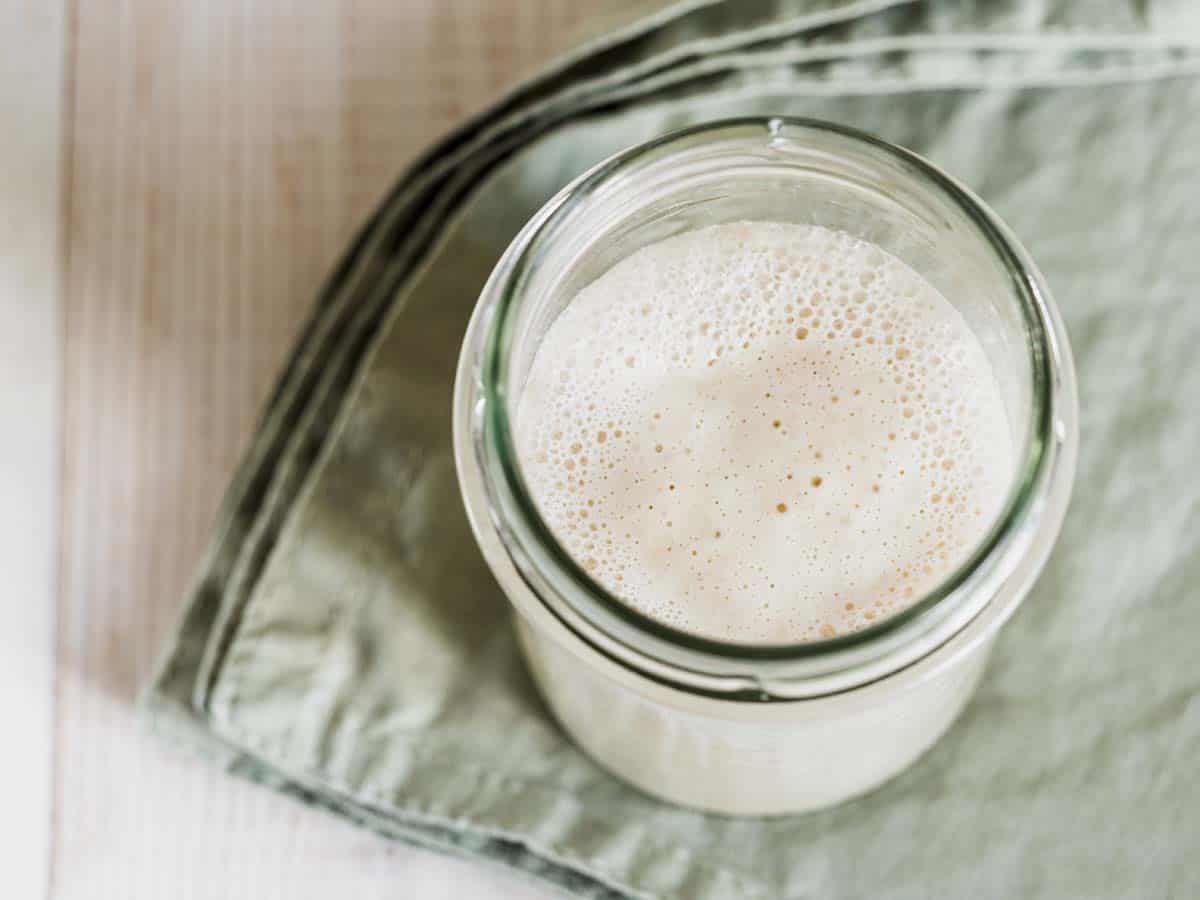
Why Are Glass Containers Better Than Plastic Containers?
Always using a clean container is important when maintaining a sourdough starter. For this reason, I prefer glass containers over plastic containers.
Glass containers make for easy cleaning. They can easily be sanitized in the dishwasher to make sure they are completely clean and free from bad bacteria that can cause mold.
Plastic containers may also react to acidic ingredients and can be scratched. Those scratches may harbor bacteria that can adversely affect your sourdough starter.
If you do choose to use a plastic container I suggest sticking to plastic containers that are made of food-grade plastic, are BPA-free, and reusable.
The only downside to a glass container is they can be broken. If that happens your sourdough discard cannot be salvaged due to unseen glass shards.
Tip: If the worse should happen and your sourdough starter becomes unusable I have successfully revived sourdough discard that was hanging out in my refrigerator.
Another good storage option for your sourdough starter is these glass jars from Challenger Breadware. They are sold in sets of two and come in two different sizes. They have tight fitting lids and helpful markings along the sides to help you track your sourdough starter's rise.
The lids do seal tightly so make sure to tilt the lid slightly to allow excess gas to escape.
Sourdough Storage FAQ
Yes and no. Because sourdough starter is acidic it can only be stored in a metal container if it is made of a non-reactive metal such as stainless steel.
Storing acidic foods in uncoated aluminum can cause metal to leach into the food. - America's Test Kitchen
I typically avoid plastic containers for storing sourdough starter because its acidity could cause the plastic material to breakdown over time.
I use this Jar Spatula from Oxo to scrape down the sides of the sourdough container. If the rim of the jar needs cleaning, I use a clean warm wet cloth to prevent starter from accumulating around the edge.
When I want to fully clean a jar, I pour hot water into the jar to soften any dried sourdough, rinse the jar out, and run it through a cycle in the dishwasher.
Yes. Covering your sourdough starter prevents the top from drying out as well as prevents mold from forming and bugs like fruit flies from landing in your sourdough starter.
I don't recommend it. As sourdough starter expands it produces gas which if it has nowhere to escape will cause pressure to build up in the container and potentially cause the container to crack or burst.
Choosing the best container for your sourdough starter is essential for a low stress and enjoyable sourdough baking experience.
Whether you opt for glass jars, plastic containers, or ceramic crocks, consider factors like size, material, and ease of maintenance.
Experiment with different options to discover what works best for you.
Sourdough Discard Recipes
Thanks for Reading!
If you try this recipe, let me know! Leave a comment and rate it below! You can also snap a picture and post it on Facebook or Instagram be sure to tag me @RaspberriesandKohlrabi.
Subscribe to get more recipes and tips by email.


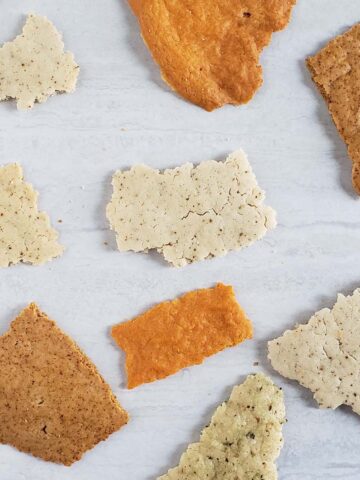
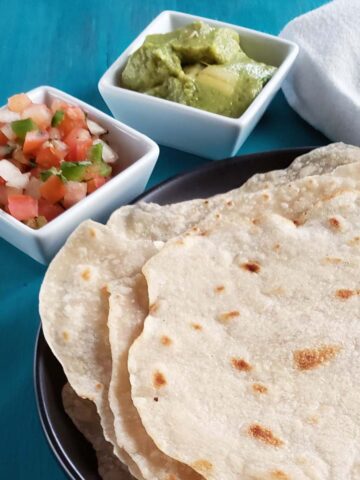
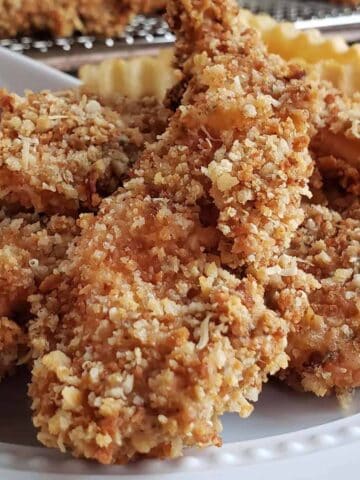
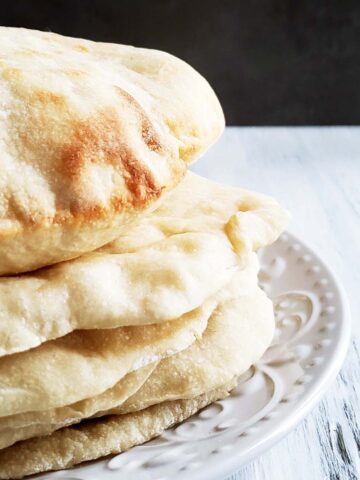
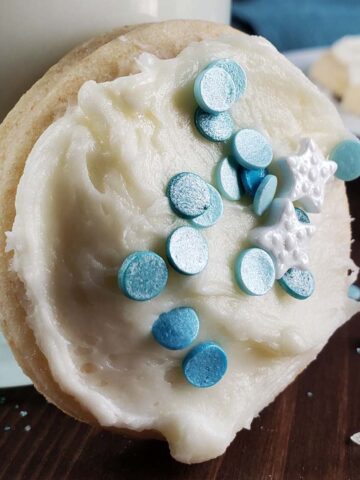
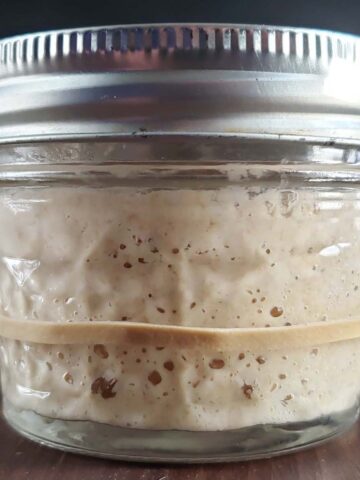
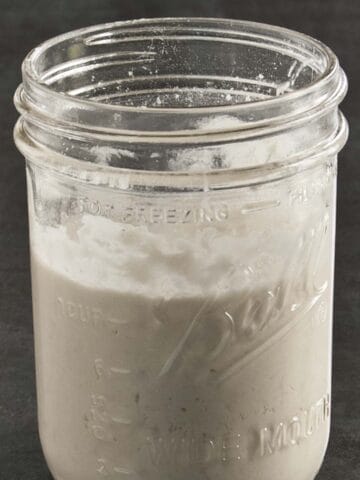
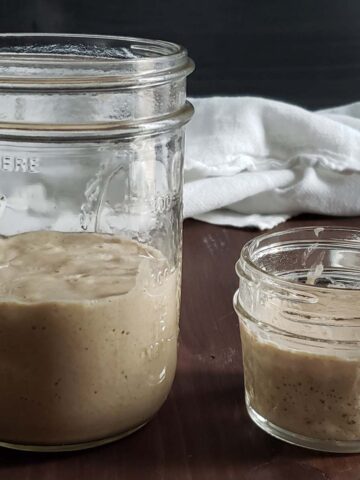
Comments
No Comments